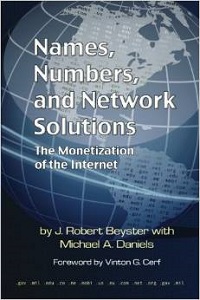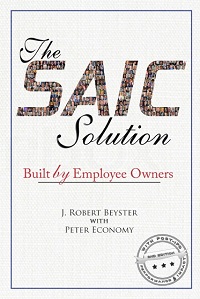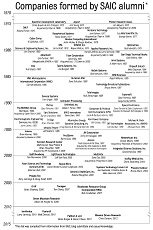Electronic Health Records and Beyster Professorship
4 Comments Published by Dr. Beyster March 1st, 2011 in Employee Ownership, Government, Technology.I have been following in the news the Obama administration’s progress on incentivizing hospitals, medical centers, and doctors to use electronic health records. I didn’t realize until recently that Congress committed $19 billion in stimulus funding from the American Recovery and Reinvestment Act of 2009 to push the American healthcare system away from its age-old practice of using paper records — still annotated by doctors and nurses by hand — and towards computer-based electronic records. It is my understanding that so far, this effort is meeting with limited success. Currently, only about 30 percent of doctors nationwide are using electronic medical records.
Part of the problem is that many doctors and nurses have grown up with the old system and see no reason to change it. Another part of the problem is the sheer amount of resources — both financial and labor related — required to make the transition.
The University of Pittsburgh Medical Center (UPMC) is a case in point. Just a couple of years ago, UPMC had already spent five years and more than $1 billion on information technology systems to get ready for the transition to electronic medical records. UPMC is a very large medical center comprising 20 hospitals as well as 400 doctors’ offices, outpatient sites and long-term care facilities employing about 50,000 people.
Even with all the significant resources that UPMC devoted to the transition, the medical center’s early attempts to create a universal electronic medical records system in the mid-2000s were met with resistance. According to reports, doctors, staff, and other users either avoided using the new technology altogether or clung to individual, disconnected software and systems that UPMC’s IT department had implemented over the years.
This points out another problem with the implementation of electronic medical records: there is no standard format agreed to. This means that the system that a particular hospital uses may not be compatible with the system used by another hospital or by other doctors, even in the same city. The Obama administration is currently pushing for the healthcare industry to develop and adopt a standard format for electronic medical records. I agree that this is a good idea.
I am actually somewhat surprised that it has taken so long for electronic medical records to find widespread use across our country. As you may be aware, while I was at SAIC, we were involved in one of the nation’s very first electronic medical records programs: Composite Health Care Systems (CHCS). As a result of a competitive proposal submitted by Jim Russell and his team, and a subsequent fly-off against three commercial healthcare software companies, in 1988 SAIC was awarded a $1.01 billion, eight-year contract to design, develop, and implement an electronic medical records and information technology system. Under this contract, we were tasked to support clinical operations at 526 Army, Navy, and Air Force hospitals and clinics worldwide serving more than 8.5 million beneficiaries. The project was a great success for the company, and for the Department of Defense, and it provided a model for civilian healthcare providers to emulate. Unfortunately, very few chose to do that.
Despite the foot-dragging going on by some healthcare providers, however, I am certain that one day all medical records will be available electronically. When they are, I suspect that many doctors and hospitals will look back and wonder why they didn’t make the transition sooner.
* * *
I would like to take some time to congratulate Rutgers Professor Joseph Blasi, whose investiture ceremony as the very first J. Robert Beyster Professorship of Employee Ownership at Rutgers’ School of Management and Labor Relations took place last Thursday. I regret that I was unable to fly out to New Jersey to personally take part in the ceremony. Fortunately, I was able to watch it on video.
Joseph is one of the top experts anywhere on employee ownership, and he and his colleagues and students are doing outstanding research in the areas of employee ownership and shared capitalism. I am very pleased to play a part in supporting their ongoing programs.
– Bob





As a user of CHCS/AHLTA for the past 8 yrs I would say the benefits outweigh the negatives. So Thank You for your involvement.
However, the main way for it to have high return on investment is if we have a national EMR system in which other entities can plug into. Sort of like the internet. So now I see my patient going to the VA but they apparently have a different system. Example of one area where technology can improve health… statistics show over 50% medication noncompliance. We have stuff on our iphones that can track where we are!
And so what happens when the svc member with only 10 year get’s out? He start a new with a separate health carrier with a different EMR. The other day, my dental surgery almost got cancelled because they misplaced my record.
Furthermore, I’m a firm believer in leveraging buying power especially for the populations who do what they can with what their given. It has been a little disappointing from the regard of what amazing things we can do for end of life care compared with efficacy or lack there of prevention.
I think we should make a distinction between government involvement (like the housing bubble) versus a public health issue (rising cost and disparities in health). National EMR and perhaps a Health FICO maybe instrumental. If we are to truly influence public behavior we need incentives to merge medicine/business/technology with a clear focus on health not disease management.
Cheers,
Truong
Truong: Thank you for your very thoughtful posts on my blog. You appear to be very well versed on the subject of military medicine and electronic medical records, and the readers of this blog will benefit from your knowledge. I agree that there should be one centralized electronic system for all medical records that any doctor or hospital or other healthcare provider could plug into from anywhere at any time. This would be a far more efficient and effective system than the hodgepodge of paper and electronic systems that now exist. The Health FICO in particular is a very interesting idea. — Bob
Bob,
As a veteran military physician with experience in the public and private sectors, I have an idea that would greatly improve the gaps and challenges in American healthcare.
As a relatively young doctor, I recognize and embrace the transformational change needed in the system. I’ve discussed with numerous medical colleagues young and old about the areas of opportunity in regards to health technology – there is consensus. It is hard but it is necessary – we see the default future and we need to course correct. It involves alignment of many stakeholders but I believe a science and application organization such as SAIC could be pivotal in the future of health care.
My underlying concern is how health care can cripple communities, organizations, families – its is currently being used as a tool instead of an asset.
TDN in San Diego
Truong: Thank you for your thoughts about what SAIC might bring to the table in the area of health technology. We clearly need some innovative new approaches to our healthcare system, and SAIC could be part of the solution. — Bob